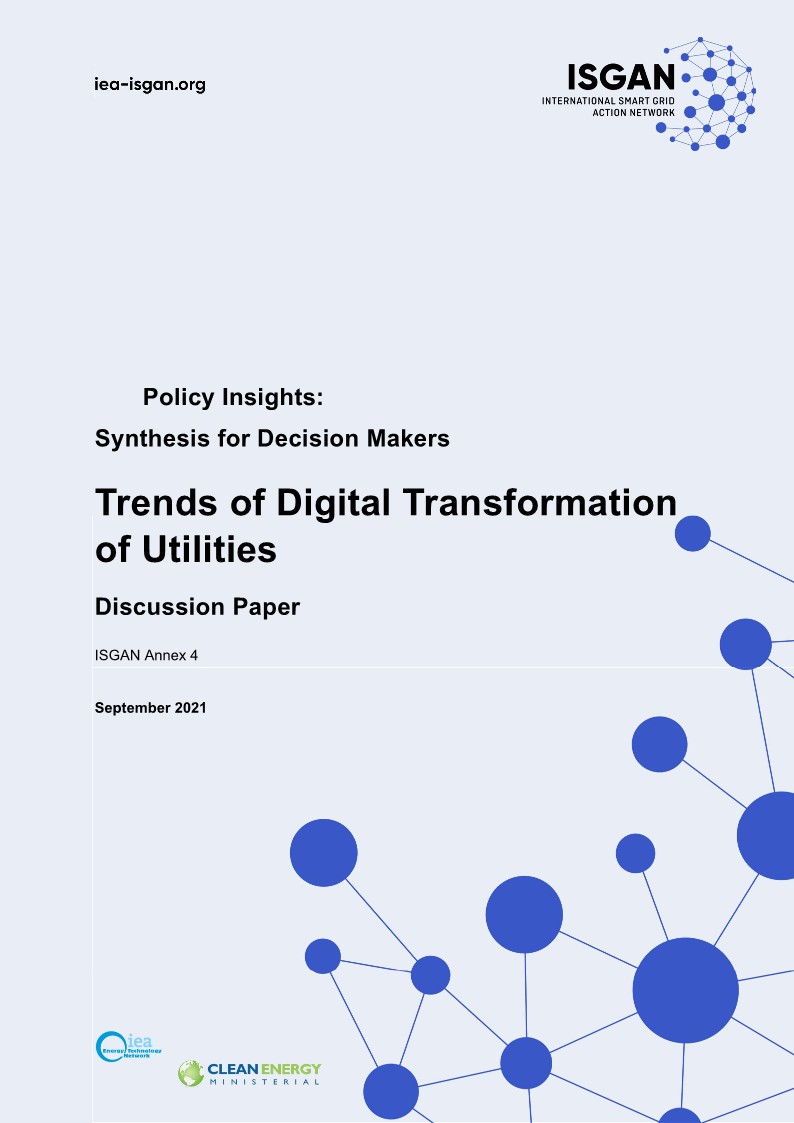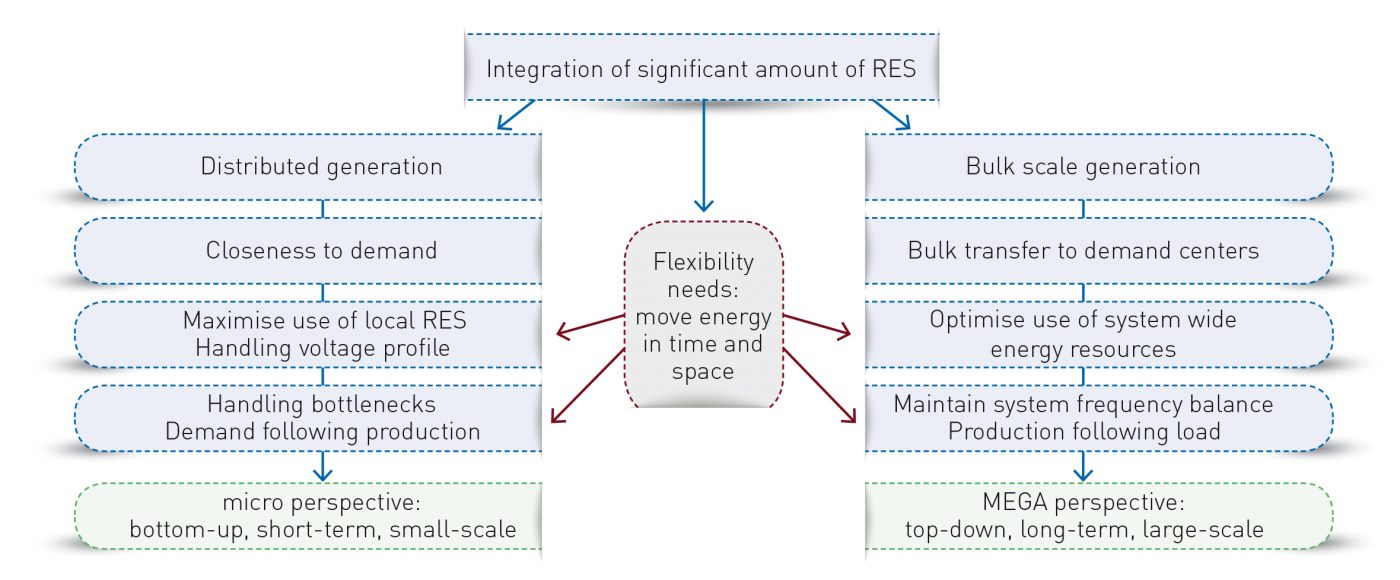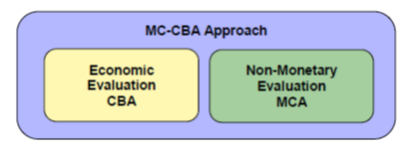The growth of power generation from Non-Programmable Renewable Energy Sources (NPRES) is accompanied by a progressive decrease of the operating hours of large synchronous generators. This increases complexity and costs, for Transmission System Operators (TSOs), to keep power system operation reliable and secure, since power flows are affected by more variability and unpredictability and, at the same time, less resources are available for frequency and voltage regulation, system balancing support and congestion management.
Thanks to their fast response, flexible control and easy scalability, Battery Energy Storage Systems (BESS) can be part of the solution mix to face such issues, by contributing to the supply of Ancillary Services (AS), both in a stand-alone configuration and in support of NPRES plants and of conventional plants.
AS include traditional ones, originally tailored to conventional power plants, and novel ones, which are gradually being introduced by TSOs to meet the new needs for prompt intervention against system perturbations.
However, services characterized by comparatively slow response times and small power gradients may require large energy contributions, which may be difficult to achieve with the BESS limited energy content, while fast services, despite requiring smaller energy contributions, are not widespread (they have been introduced mainly into isolated power systems) and still lack consolidated regulatory frameworks and remuneration mechanisms. Besides, BESS investment costs, although exhibiting a decreasing trend, are still rather high.
Therefore, techno-economic analyses are needed to understand with what performance (in meeting power exchange requests and in coping with cycling aging) and with what profitability, for their owner/Balancing Service Provider (BSP), BESS could provide single or multiple services together (to look for revenue stacking in case a single service is not enough to reach investment payback).
“Power” versus “energy” services: e.g., with reference to the Italian nomenclature,
- primary and fast frequency regulation versus tertiary frequency regulation/balancing and NPRES imbalance reduction;
- secondary frequency regulation is somewhat in-between.
Remuneration schemes:
- payment for availability: remuneration for power made available (e.g., Italian pilot projects called Fast Reserve and UVAM – virtual eligible units including different kinds of technology; British Enhanced Frequency Response)
- payment for activation: remuneration for energy actually exchanged (e.g., standard AS in Italy, pilot projects in Italy)
- the two forms of payment can be present together (e.g., Italian pilot projects called Fast Reserve and UVAM).
To this purpose, a dynamic response model and a stochastic optimization procedure for BESS sizing and management have been employed in this work. According to the results obtained in the simulations (mainly based on the current Italian market rules and Grid Code specifications),
- “power” services remunerated for activation may not be profitable enough for a BESS, due to the rather small energy exchanges involved (this happens, e.g., for the Italian standard primary frequency regulation). In that case, the presence of a remuneration for the power made available could be fundamental to determine the economic attractiveness of such services.
- For “energy” services, payment for activation can be profitable, due to the rather large energy exchanges involved. The actual profitability is anyway also determined by the energy prices.
- In the Italian Ancillary Service Market (ASM), e.g., upward/downward prices for secondary and for tertiary frequency regulation (and balancing) seem to be sufficiently high/low respectively, although further analyses of historical market results are needed, to understand the impact of bid acceptance uncertainty on BESS economic results and to inquire whether suitable bidding strategies could be put in place by BESS to become competitive on the ASM.
- In other European countries, these services can benefit of remuneration both for availability and for activation: e.g., in Germany and in Switzerland, all the services except Frequency Containment Reserve (FCR, which has only an availability payment). In the presence of a double remuneration, higher revenues could of course be expected; however, the specific remuneration prices should be analysed, to understand whether acceptable return on investment could be obtained.
Looking at Europe, the European Commission “Study on energy storage – Contribution to the security of the electricity supply in Europe, Final Report”, March 2020, plus a questionnaire shared among the ISGAN partners show that BESS are undergoing a fast development process, especially in Continental Europe (CE) and in Great Britain (GB). In CE, this process is mainly fostered by the high level of interconnection and by the cooperation among countries for balancing service procurement: such cooperation has already led to an integration of the platforms for energy exchange and balancing service exchange. In GB, electricity markets are very mature and exhibit a high segmentation of AS, aiming at better adapting to power system’s needs, on the one hand, and at creating business opportunities for market operators, on the other hand.
BESS are already present in many European countries, both as large stationary devices and as small distributed ones (and also as electric vehicles). They are often allowed to participate in wholesale energy exchange (on day-ahead/intraday markets) and/or in AS supply (via trading in ASMs in particular). BESS usually provide FCR and automatic Frequency Restoration Reserve (aFRR), sometimes manual Frequency Restoration Reserve (mFRR) and Replacement Reserve (RR); at present, BESS installed power devoted to AS ranges from few MW to some tens of MW to some hundreds of MW; such BESS are managed by few operators, mainly BSPs.
In several European countries, rules for BESS participation in electricity markets are the same as the ones for conventional power plants. Besides, in some countries this participation is allowed only via pilot projects, although BESS can already be aggregated together and also with loads and distributed generators. Work is still needed to overcome barriers to BESS full deployment, e.g. in terms of service technical specifications and performance requirements, market eligibility requirements, remuneration schemes.



 The participants at these two meeting days have shown a high level of engagement and it has been highly valuable to learn from each other. In short, we can conclude that these meetings were very productive and successful in gathering a large amount of knowledge.
The participants at these two meeting days have shown a high level of engagement and it has been highly valuable to learn from each other. In short, we can conclude that these meetings were very productive and successful in gathering a large amount of knowledge.


